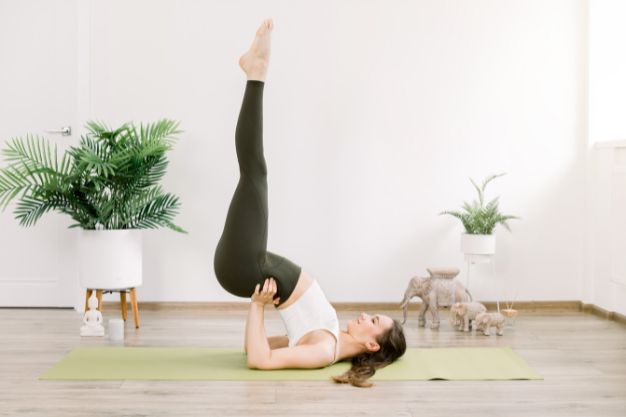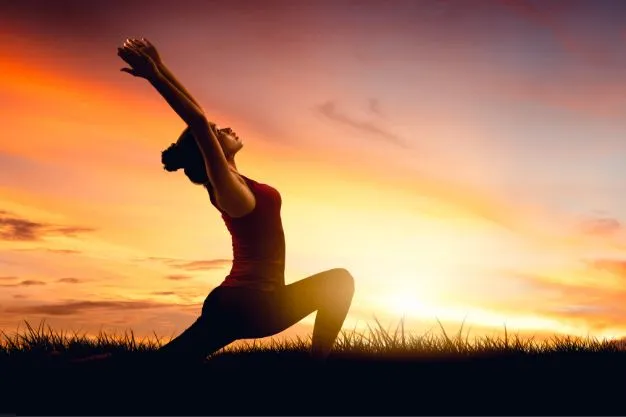HOW TO MANAGE ARTHRITIS THROUGH YOGA ?
Yoga views arthritis as an early energy imbalance issue, triggered by factors like stress, lifestyle, and diet. Yoga acts as a powerful solution to restore balance, potentially reducing medication dependency, enhancing flexibility, and boosting overall well-being. Daily yoga practice has led many to remarkable health and happiness transformations.
What are the different forms of Arthritis?
Arthritis, a widespread condition, inflames the body’s joint areas, causing discomfort and limiting movement. It mainly affects big joints like knees, hips, and even small ones like fingers. Over time, it can harm joints irreversibly, causing pain, swelling, redness, and stiffness, making it a significant health concern.
- Acute Arthritis: At times, when you get sick with things like colds, flu, or fever, toxins from viruses or bacteria can end up in your joints. But don’t worry, as you recover from the illness, this joint issue usually goes away too.
- Gout: Arthritis, influenced by our diet. What we eat matters a lot.
- Rheumatoid Arthritis: This is a type of joint wear and tear that happens to younger and middle-aged folks. It can happen when emotional stress, strong medications, or severe infections introduce harmful substances into your body.
- Osteoarthritis: Often occurs in middle-aged and older individuals due to excess weight, inactivity, and overeating.
“TIPS FOR EFFECTIVE YOGA.”
- Before yoga, soak your legs in warm saltwater to boost circulation.
- Don’t stay in poses too long; aim for 10-second holds, repeated throughout the day, to keep your joints active and comfortable.
STANDING POSTURES
- Neck movements (Greeva sanchalan)
- Breathe in, tilt your head back; Exhale, return to start. Don’t lower your chin.
- Turn your head right, then left. Hold each for 5 seconds. Repeat three times.
- Shoulder movements (Skanda sanchalan)
- Place your fingers on shoulders, gently rotate arms.
- Inhale, raise arms to ears. Exhale, lower them.
- Repeat 3 times on each side.
- Mountain pose (Parvatasana)
- Stand with legs together.
- Inhale, lift arms up
- Exhale, interlock fingers with palms facing up.
- Inhale, rise on toes,
- Exhale, lower the arms
- Triangle pose (Trikonasana)
- Stand with legs together.
- Inhale, lift your left arm next to ear.
- Exhale, bend to the right.
- Repeat on the other side.
- Extended triangle pose (Uthita Trikonasana)
- Stand with legs 2 feet apart.
- Inhale, lift arms to shoulder level.
- Exhale, touch right ankle with right hand, knees straight.
- Left hand on waist to relax your neck and shoulders.
- Repeat on the other side.
SITTING POSTURES
- Ankle Movements
- Sit comfortably on the floor (Dandasana) or in a chair.
- Move your ankles in clock and anti-clock wise 10 times, and flex your feet up and down.
- Focus on your legs, especially your knees, ankles, and thighs, and feel the stretch.
- Wrist Movements
- Extend your arm straight out in front of you, at shoulder level.
- Make a fist with your hand keep your palm facing down.
- Rotate your wrist 10 times in both clockwise and anticlockwise directions making big circles.
- Finger stretching
- Make a fist, then open your hand. Do this 10 times.
- Feel the stretch in your elbows and around your wrist.
- It’s like a mini workout and a good stretch for your hand.
- Cat pose (Marjari Asana)
- Get on your knees, space them a bit.
- Place your arms vertically in line with your shoulders, palms down.
- Inhale, lift your head, arch your back, and let your belly drop.
Pause….
- Exhale, tuck your chin, round your back, tighten your belly, and squeeze your buttocks.
- Skip chin lowering if your neck hurts.
- Variation of Janusirshasana
- Sit on the floor, legs stretched in front.
- Bend your right knee, placing the right heel against your left upper thigh.
- Keep your left leg straight.
- Inhale as you raise your arms
- Exhale as you bend sideways, reaching your left leg with your left hand and your right hand around your waist, twisting your shoulders with a straight back, feel the stretch.
- Hold. Repeat with the other leg for a refreshing stretch.
SUPINE POSTURES – Lying on Your Back
- Arm Movements (Hasta Sanchalan)
- Lie on your back, flat on the floor, feet close together.
- Inhale, turn your palms to face upward.
- Lift your arms a bit off the ground.
- Move your arms out to the sides without touching the floor.
- Bring them above your head with your left palm on top of your right palm.
- Stretch your arms up and point your toes down as you exhale. Pause.
- move the arms back to supine position.
- Knee Movements (Janu Sanchalan)
- Lie on your back with legs close together.
- Inhale, reach your arms over your head and hold onto your opposite elbows, placing them on the floor.
- Squat your legs and press your left knee over your left right foot. Hold.
- Exhale and return to supine position. Repeat the process with other leg.
- Leg movements (Paad Sanchalan)
- Lift your arms in line with your shoulders.
- Lift your left leg straight up
- Cross it over your right leg, trying to keep both legs straight.
- Repeat the process with the other leg.
Dive deeper into the world of yoga, discover its forms and benefits on our website, https://vyanitiyoga.com/blog/. Explore articles, guides, and insights that enrich your practice and well-being, whether you’re a seasoned yogi or just starting on this incredible path, our blog has something for everyone.
Don’t miss this chance to expand your wisdom and elevate your yoga journey. Visit us today; we’re thrilled to explore with you. Let yoga’s wisdom lead you to a healthier, happier life. Namaste!









